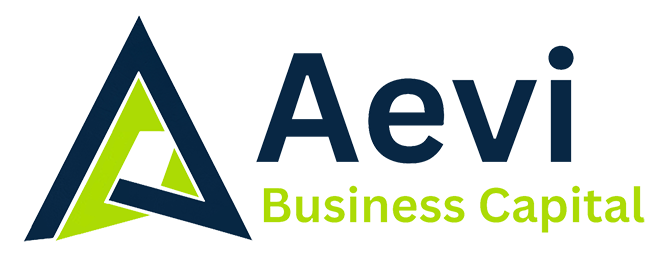As the year winds down, expenses tend to go up. Between holiday spending, vendor payments, and heavier payroll loads, many businesses find themselves making fast financial decisions without much room to breathe. It is common to see budgets suddenly stretched thin in November and December, no matter how well the rest of the year went.
That is why some business owners turn to cash solution loans for year-end expenses. These short-term options can help fill the gaps when holiday operations, unexpected bills, or seasonal shifts put pressure on daily cash flow. Planning ahead helps, but the end of the year does not always make room for perfect timing.
When Year-End Expenses Start to Pile Up
It does not take long for final-quarter spending to double or even triple. By late November, most businesses have already paid for seasonal inventory and started preparing for holiday sales or higher customer traffic. But the costs do not stop there.
• End-of-year bonuses for employees or contractors
• Final payments to vendors for large Q4 orders
• Restocking supplies or inventory for January
• Tax preparation services or early bookkeeping costs
These expenses often show up back-to-back, sometimes overlapping. When cash flow slows down, just one late payment or unplanned bill can disrupt everything. Some companies might wait on client payments that do not arrive until the next month, or they may have inventory stuck in transit. Add up a few delays and the pressure grows fast.
Covering all of this while meeting day-to-day needs, like payroll or rent, can stretch reserves thin right when the books need to close smoothly.
How Cash Solution Loans Can Help Smooth the Gaps
Short-term loans offer flexible support when business costs rise faster than cash comes in. For companies managing year-end pressures, this kind of funding gives just enough help to stay on track without scrambling for last-minute fixes.
Cash solution loans are used to:
• Cover payroll while large invoices are still unpaid
• Make final supply orders before vendor cut-off dates
• Prepare for January by getting ahead of marketing or operational costs
We help new and existing businesses across the U.S. get access to short-term working capital, including merchant cash advances and lines of credit. Our solutions are designed to fill cash flow gaps so business owners can meet critical expenses, keep staff paid, and have supplies ready for peak periods.
These loans are often used not when something goes wrong, but to keep things moving when timing gets tricky. For example, if a big sale finishes mid-December but client payments will not clear until early January, that gap can affect everything from staffing to shipment schedules. A short-term cushion can help avoid having to cut corners or miss key deadlines.
By smoothing the space between expenses and incoming funds, businesses can stay focused on serving customers and finishing the year strong, without letting stress take over.
Timing a Loan for Stronger Year-End Planning
Getting ahead of year-end costs is not about spending more, it is about planning better. When businesses wait until the week before a big payout to address a shortfall, the options shrink. Early preparation makes choices easier and often less expensive.
Taking action in November or early December means:
• An extra window to compare repayment schedules or terms
• Time to take advantage of year-end vendor discounts
• Fewer surprises when tax season starts in January
Making funding decisions earlier in the season opens the door to cleaner record-keeping too. When you know what is covered, it is easier to close the books with fewer loose ends. And when tax prep begins, those smart choices show up in each line item, making the start of the new year less stressful.
Our funding partners offer quick approval processes, so business owners can act on opportunities or close gaps with less waiting, making it possible to finalize expenses or prepare for January with peace of mind.
Planning for winter staffing, first-quarter campaigns, or inventory management also benefits from this timing. Instead of slowing down just to catch up, early support helps you start the next quarter ready to move.
Signs It Might Be Time to Get Support
It is not always clear when to seek financial help. Some businesses wait too long, thinking they can move budgets around or hold off on payments. But small signs often show up first and can be easier to handle when caught early.
Here is what to watch for:
• Falling cash reserves, especially during busy weeks
• Clients taking longer than usual to pay invoices
• Growing bills that keep getting pushed off
• Difficulty closing out monthly budgets cleanly
• Missing out on early-payment discounts
These problems do not always mean something is broken. In many cases, they point to a timing issue, especially when tied to seasonal shifts. Asking for help early can actually show strength, not weakness. It shows you are paying attention, making informed choices, and doing what is needed to keep your operations steady.
Ready for a Fresh Start in January
Finishing the year strong gives you a better start in January. No loose ends, no catch-up mode. Just a smoother shift from one quarter to the next.
When we plan carefully and use the tools available, it is easier to handle the holiday rush, cover big expenses, and keep everything on track through the transition. Smart funding choices like cash solution loans can give just enough breathing room to manage those shifts with more control and less stress.
Staying ahead of year-end cash flow challenges is easier with the right support, and we can help you keep things steady without last-minute pressure. Whether your business needs to cover necessary expenses or prefers a buffer for holiday operations, short-term solutions help transitions go smoothly. Many companies rely on flexible options like cash solution loans to manage seasonal changes without slowing down. At Aevi Consulting, we are dedicated to making sure your business starts the new year focused and positioned for success, so reach out today to discuss your goals.










